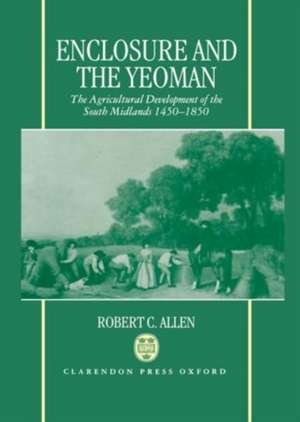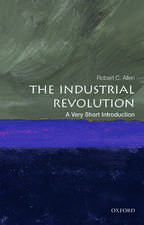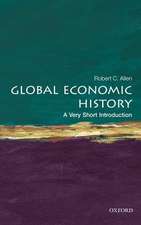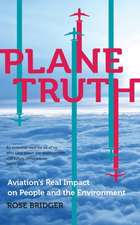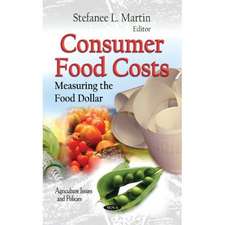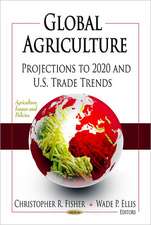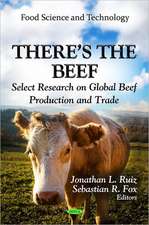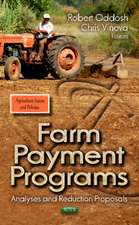Enclosure and the Yeoman: The Agricultural Development of the South Midlands 1450-1850
Autor Robert C. Allenen Limba Engleză Hardback – 29 apr 1992
Preț: 851.18 lei
Preț vechi: 1288.57 lei
-34% Nou
Puncte Express: 1277
Preț estimativ în valută:
162.87€ • 170.51$ • 134.77£
162.87€ • 170.51$ • 134.77£
Carte tipărită la comandă
Livrare economică 25-31 martie
Preluare comenzi: 021 569.72.76
Specificații
ISBN-13: 9780198282969
ISBN-10: 0198282966
Pagini: 492
Ilustrații: 15 figures, tables, map
Dimensiuni: 163 x 237 x 28 mm
Greutate: 0.76 kg
Editura: Clarendon Press
Colecția Clarendon Press
Locul publicării:Oxford, United Kingdom
ISBN-10: 0198282966
Pagini: 492
Ilustrații: 15 figures, tables, map
Dimensiuni: 163 x 237 x 28 mm
Greutate: 0.76 kg
Editura: Clarendon Press
Colecția Clarendon Press
Locul publicării:Oxford, United Kingdom
Recenzii
`This is an ambitious, impressive, and original book. It asks some very pertinent questions simply and clearly and it answers them concisely using key quantitive and printed primary sources, quantities of historiographical scaffolding, and a tolerable minimum of jargon.'Albion Summer 1993 Vol 25, No 2
'His forthright conclusion is that the only people who benefited from enclosures were the large landlords. The implications of Allen's scholarship are far-reaching.'Times Higher Education Supplement
'Very impressive is the author's performance in mining and translating available empirical data to measure these impacts of enclosures in the English Midlands. The study is obviously a desirable acquisition.'J. Murdock, emeritus, University of Missouri-Columbia, Choice, January 1993
'This book is an outstanding and indispensable contribution in which Allen demonstrates his vast knowledge of the sources and the literature. It is rich in stimuli and arguments for discussion related both to methodology and content. It opens new research avenues and fields of study.'Gabriella Corona, The Journal of European Economic History, Volume 21, Number 2, Fall 1992
'This is a most refreshing and stimulating read. Now the full flower of his research blossoms before us in one volume. In a marvellously succinct opening chapter he introduces the reader to a familiar historiography of ideas ... Allen's book will tread on many toes, but in doing so it should breathe life into otherwise smouldering embers ... this is a vital book, and will be a focus of debate for years to come.'Michael Turner, The Agricultural History Reviews, Volume 41, Part 1, 1993 20/08/1993
`In a short review it is difficult to do justice to the painstaking, carefully constructed - and sometimes controversial - arguments put forward in this densely written book ... the book is of interest to all those concerned with rural development in Tudor, Stuart and Georgian England.'Labour History Review
'It is ... the most statistically sophisticated and exhaustive study of enclosure yet published ... It is written with clarity, and a highly systematized stucture ... This is a most significant contribution to economic and to rural history.'Malcolm Chase, University of Leeds, History No. 253, June 1993
'iconoclastic and consistently stimulating book ... It is a immensely hard-working effort, that marshals an impressive array of data to which a myriad of statistical manipulations has been applied ... the book is excellent in making complex material accessible to a wider audience ... for those at all interested in the problems of how societies facilitate agricultural and industrial takeoff, this is an essential read. Many may disagree with its findings, perhaps even violently, but in its general clarity of exposition and its ability to provoke thought it is a model of its kind.'John Langdon, University of Alberta, Canadian Journal of History, XXIX, December 1994
an important book. It bristles with new ideas, theories and hypotheses; relates these to new empirical data; and,to ensure appropriate riguor, presents the whole within an economic framework. ...there is much of considerable value in the book and it should be read by all those with an interest in agriculture and the land from the empirical investigation, and some of the new data...will be eagerly plundered by other scholars.
'His forthright conclusion is that the only people who benefited from enclosures were the large landlords. The implications of Allen's scholarship are far-reaching.'Times Higher Education Supplement
'Very impressive is the author's performance in mining and translating available empirical data to measure these impacts of enclosures in the English Midlands. The study is obviously a desirable acquisition.'J. Murdock, emeritus, University of Missouri-Columbia, Choice, January 1993
'This book is an outstanding and indispensable contribution in which Allen demonstrates his vast knowledge of the sources and the literature. It is rich in stimuli and arguments for discussion related both to methodology and content. It opens new research avenues and fields of study.'Gabriella Corona, The Journal of European Economic History, Volume 21, Number 2, Fall 1992
'This is a most refreshing and stimulating read. Now the full flower of his research blossoms before us in one volume. In a marvellously succinct opening chapter he introduces the reader to a familiar historiography of ideas ... Allen's book will tread on many toes, but in doing so it should breathe life into otherwise smouldering embers ... this is a vital book, and will be a focus of debate for years to come.'Michael Turner, The Agricultural History Reviews, Volume 41, Part 1, 1993 20/08/1993
`In a short review it is difficult to do justice to the painstaking, carefully constructed - and sometimes controversial - arguments put forward in this densely written book ... the book is of interest to all those concerned with rural development in Tudor, Stuart and Georgian England.'Labour History Review
'It is ... the most statistically sophisticated and exhaustive study of enclosure yet published ... It is written with clarity, and a highly systematized stucture ... This is a most significant contribution to economic and to rural history.'Malcolm Chase, University of Leeds, History No. 253, June 1993
'iconoclastic and consistently stimulating book ... It is a immensely hard-working effort, that marshals an impressive array of data to which a myriad of statistical manipulations has been applied ... the book is excellent in making complex material accessible to a wider audience ... for those at all interested in the problems of how societies facilitate agricultural and industrial takeoff, this is an essential read. Many may disagree with its findings, perhaps even violently, but in its general clarity of exposition and its ability to provoke thought it is a model of its kind.'John Langdon, University of Alberta, Canadian Journal of History, XXIX, December 1994
an important book. It bristles with new ideas, theories and hypotheses; relates these to new empirical data; and,to ensure appropriate riguor, presents the whole within an economic framework. ...there is much of considerable value in the book and it should be read by all those with an interest in agriculture and the land from the empirical investigation, and some of the new data...will be eagerly plundered by other scholars.
